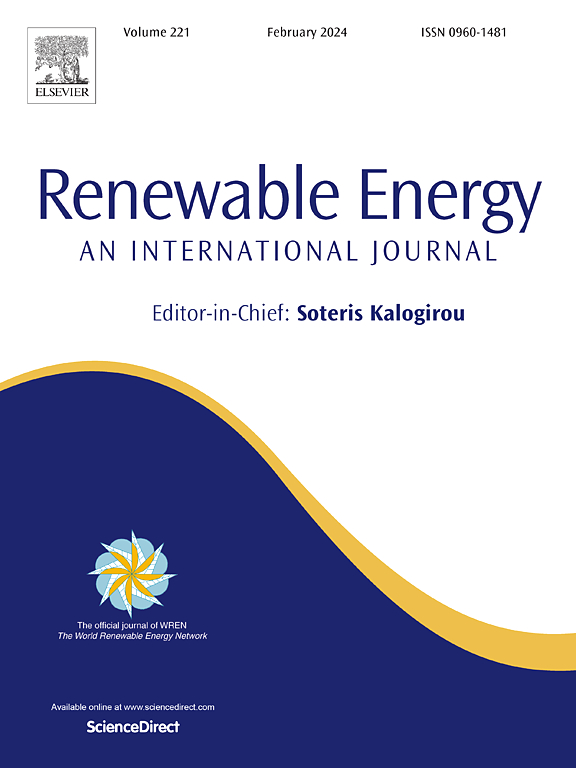Enhanced thermal performance of latent heat thermal energy storage systems with pulsating flow: A biomimetic approach inspired by alveolar vascular structures
IF 9
1区 工程技术
Q1 ENERGY & FUELS
引用次数: 0
Abstract
This study addresses the limitations of shell-and-tube latent heat thermal energy storage (TES) units, namely low heat transfer efficiency and slow charging/discharging rates, by introducing alveolar vascular fins and pulsating flow. Numerical simulations were conducted to analyze the impact of pulsating flow parameters (period, amplitude, and temperature) on the melting/solidification process of the phase change material (PCM). The results show that pulsating flow significantly enhances convective heat transfer between the PCM and the heat transfer fluid (HTF), leading to shorter melting times. The average PCM temperature increases with increasing amplitude velocity, decreasing pulsating period, and increasing inlet temperature. To optimize TES performance, response surface method and the non-dominated sorting genetic algorithm II (NSGA-II) were employed. The study found that amplitude velocity had the greatest influence on TES heat transfer. Optimal values for heat storage, pressure drop, and melting time were determined to be 8.39 kJ, 22.87 Pa, and 309.82 s, respectively, corresponding to a pulse period of 12.26 s and an amplitude velocity of 0.139 m/s. This study sheds light on the mechanism by which pulsating flow enhances the heat storage performance of TES units, providing valuable insights into the heat transfer characteristics of phase change storage under pulsating flow.
具有脉动流的潜热热能储存系统的增强热性能:一种受肺泡血管结构启发的仿生方法
本研究通过引入肺泡维管翅片和脉动流,解决了壳管潜热储能(TES)装置传热效率低、充放电速率慢的局限性。通过数值模拟分析了脉动流动参数(周期、振幅和温度)对相变材料熔化/凝固过程的影响。结果表明,脉动流动显著增强了PCM与换热流体之间的对流换热,缩短了熔融时间。平均温度随振幅速度的增加、脉动周期的减小和进口温度的升高而升高。为了优化TES性能,采用响应面法和非支配排序遗传算法II (NSGA-II)。研究发现,振幅速度对TES换热影响最大。最佳储热值为8.39 kJ,最佳压降值为22.87 Pa,最佳熔化时间为309.82 s,脉冲周期为12.26 s,振幅速度为0.139 m/s。本研究揭示了脉动流增强TES机组储热性能的机理,为脉动流条件下相变储热的传热特性提供了有价值的见解。
本文章由计算机程序翻译,如有差异,请以英文原文为准。
求助全文
约1分钟内获得全文
求助全文
来源期刊

Renewable Energy
工程技术-能源与燃料
CiteScore
18.40
自引率
9.20%
发文量
1955
审稿时长
6.6 months
期刊介绍:
Renewable Energy journal is dedicated to advancing knowledge and disseminating insights on various topics and technologies within renewable energy systems and components. Our mission is to support researchers, engineers, economists, manufacturers, NGOs, associations, and societies in staying updated on new developments in their respective fields and applying alternative energy solutions to current practices.
As an international, multidisciplinary journal in renewable energy engineering and research, we strive to be a premier peer-reviewed platform and a trusted source of original research and reviews in the field of renewable energy. Join us in our endeavor to drive innovation and progress in sustainable energy solutions.
 求助内容:
求助内容: 应助结果提醒方式:
应助结果提醒方式:


